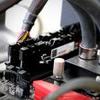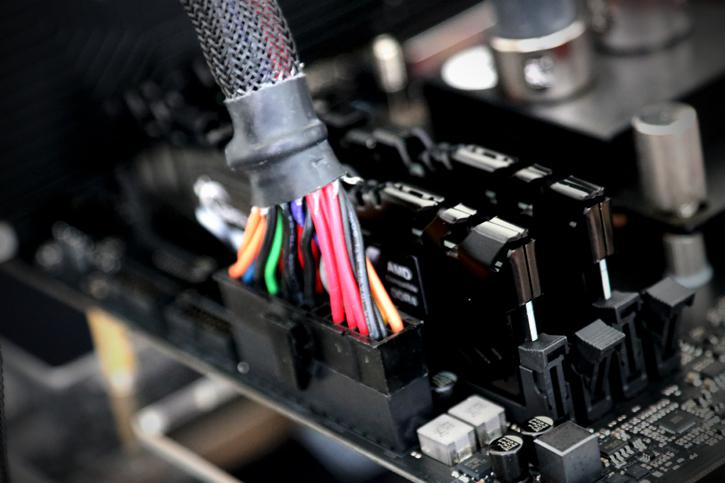An introduction at a double data-rate
Getting the Most out of your AMD Ryzen build
Tweaking the CPU and using faster memory
In this article we'll take the new G.Skill Flare X 3200 MHz memory kit and have a closer look at the effect of memory frequencies on applications and games with Ryzen 7 from AMD. Next to that we'll also address processor tweaking a bit so you can peek what effect that faster memory and a CPU tweak have as an overall impact on Ryzen 7 performance.
A lot has been said and written on Ryzen 7. A great processor series, but it lacks a little in 1080p gaming situations where you are CPU bound (if you have a fast enough graphics card). There has been much discussion on the cause of it, memory latency, latency in-between the CCX modules on the processor, driver issues, Windows 10, game optimization's, benchmarking with a GeForce card over an AMD one, thread schedulers and so on. The reality is simple, the results are what they are. Ryzen 7 lacks a good 10 to 20% in performance with super fast graphics cards in a lower resolution compared to the fastest clocked Intel SKUs. The thing is, you can do quite a bit with the platform to tweak out that difference. And one done, then all of the sudden you have a much faster setup, but now with 8 cores perhaps making it much more future proof over a quad-core processor.
In this article we'll take my favorite of the lot, the Ryzen 7 1700. Priced at 329 USD and the ability to overclock it high (you need a bit of luck with the processor of course), this CPU oozes value as you can bring it towards 499 USD 1800X performance (or at least close enough). So we will be looking at two things, we'll use that Ryzen processor in its default configuration .And then peek at performance differences with DDR4 memory. We'll start at 2133 MHz and gradually work our way upwards to 3200 MHz with a CL rating of 14. For this we use the new Flare X memory from G.Skill tested and thus rated with an XMP profile for AMD motherboards. Once we have tested the more popular DDR4 frequencies we'll top off the results with an overclock towards 4.1 GHz. And then we'll have a look as to how much performance we increased. To boost your performance, especially for gaming, here are a few generic Guru3D tips:
- Update your motherboard to the latest firmware BIOS.
- Make sure you have your memory at at least 2667 MHz with CL16 - 2133 MHz will hurt game performance.
- For best game performance, set your Windows energy performance mode to HIGH.
- Tweak your processor, we can reach 4.0 GHz on all cores on just air cooling. In this article we use liquid cooling and clock the CPu to 4.1 Ghz on all cores. This offers a big gain for game performance - but granted, this will eat a bit more energy. 50 Watts extra under hefty load.
For the Ryzen 7 1700 we reach a stable 4.0 GHz on ALL cores on air and 4.1 with liquid cooling. The 100 MHz is not going to make all the difference though. After that number things will start to get complicated though. We cannot stress enough, Ryzen is a young and new platform. Hence it will need a few software and BIOS updates. In fact during April you are going to see a new microcode BIOS update. With the AMD Generic Encapsulated Software Architecture (AGESA) 1.0.0.4 update the overall memory latency will drop with roughly 6 nanoseconds. By itself that doesn't sound huge, but as we will show in this reviews memory timings, frequency and thus latency matters quite a bit for Ryzen relative to CPU game performance and sure, that would be a 8% improvement in overall memory latency. The microcode update will help applications sensitive to exactly that, memory latency. The earlier FMA3 benchmark bug also is fixed with the new motherboard firmware updates, but we reported on that one earlier already. We are not yet testing with this new update hence, later this month performance again should improve a tiny bit.
Basically we'll deal with this article as a memory review as initially this was supposed to be just that. This in essence is the G.Skill Flare X review, yet with a little extra tweaking TLC added as you guys requested that in our forums. Let's first peek and talk a little about the Flare X AMD XMP compatible memory. This kit offers 3200 MHz out of the box at 1.35 Volts. The CAS latency is a nice CL14-14-14-34.
This RAM memory for the people that desire faster performance on the AMD platform while making sure you have a memory stable setup. These kits are vigorously tested by AMD motherboard partners and will get proper support. E.g. you can XMP profile enable them in the motherboard BIOS configuration. We received a dual-channel kit, 16GB of it .. configured over 2 DIMMs thus holding 8 GB each. Rated PC4-3200 / 3200MHz at CAS latency 14. This has to be one of the coolest AMD memory kits you have seen to date. Next page please.


